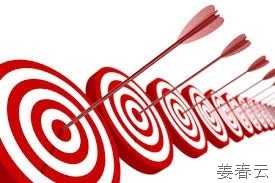Ensure an Ongoing Process To Optimize The Performance Review Process | |||
 1,191 1,191  0 0  0 0 | |||
| A truly effective performance review process isn't a one-time annual event; it's a continuous, cyclical process designed to foster growth and improvement. This ongoing nature allows for flexibility, responsiveness, and ultimately, better performance outcomes.
Goal Setting: The FoundationThe performance review process begins with clearly defined goals. These goals should be specific, measurable, achievable, relevant, and time-bound (SMART). Collaborative goal setting, where employees and managers work together, ensures buy-in and a shared understanding of expectations.
Performance Planning: Charting the CourseOnce goals are established, performance planning outlines the strategies, resources, and support needed to achieve them. This involves identifying key performance indicators (KPIs), establishing timelines, and documenting expectations. A well-defined performance plan provides a roadmap for success.
Performance Monitoring: Staying on TrackOngoing performance monitoring involves regularly tracking progress against established goals and KPIs. This doesn't necessarily mean micromanaging; rather, it's about proactively identifying potential roadblocks and ensuring the employee has the resources and support they need.
Feedback and Coaching: Guiding and SupportingFeedback and coaching are critical components of the ongoing performance review process. Regular feedback, both positive and constructive, helps employees understand their strengths and areas for improvement. Coaching provides guidance and support to help employees develop their skills and overcome challenges. This creates a separate, faster feedback loop within the overall system, allowing for rapid adjustments and course correction. The frequency of feedback and coaching should be significantly higher than the annual performance appraisal.
Performance Appraisal: A Summative AssessmentThe performance appraisal serves as a summative assessment of an employee's performance over a specific period. It draws upon the data and insights gathered through performance monitoring, feedback, and coaching. The appraisal provides a formal opportunity to recognize achievements, address areas for improvement, and set new goals for the upcoming period.
Rewards: Recognizing and ReinforcingThe performance appraisal informs decisions related to rewards, such as salary increases, bonuses, and promotions. Linking rewards to performance motivates employees to achieve their goals and contribute to the organization's success.
Learning and Development: Investing in GrowthThe performance review process also identifies opportunities for learning and development. By identifying skill gaps and areas where employees can improve, organizations can provide targeted training and development programs to enhance their capabilities and support their career growth. These learning and development opportunities ultimately feed back into the goal setting and performance planning stages, further optimizing the ongoing performance review process. Tags: Career Clarity Deadline Development Goal Progress Leadership Monitor Progress Performance Plan Productivity | |||
| |||
| | |||
|
 3224
3224 
